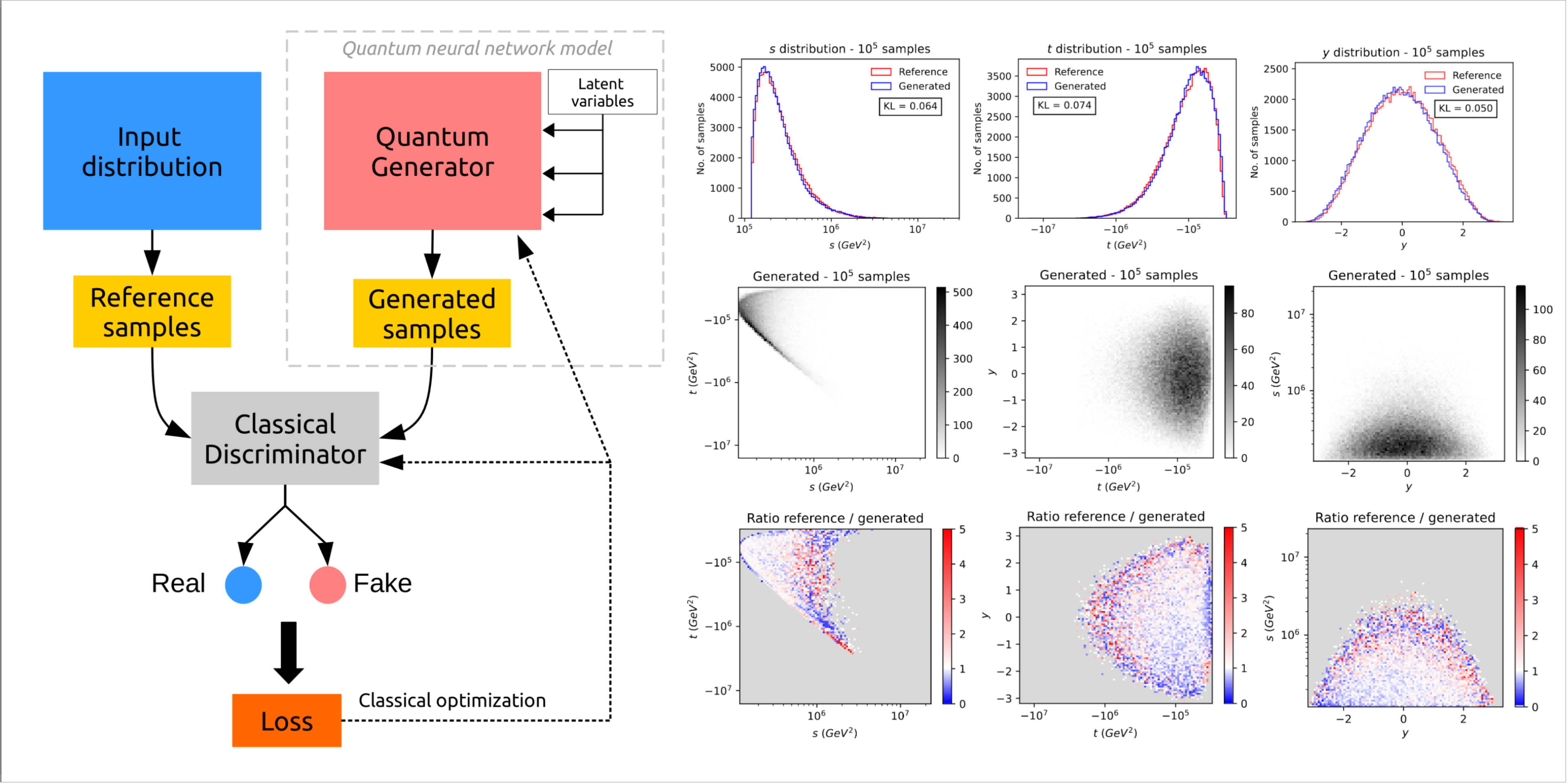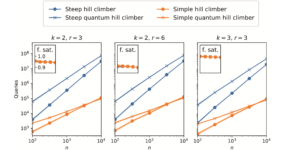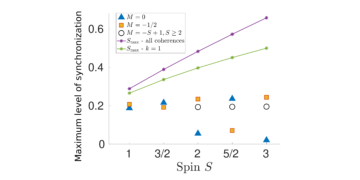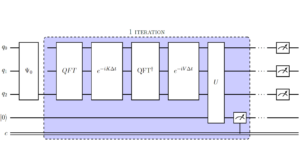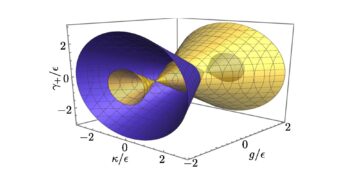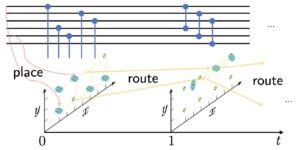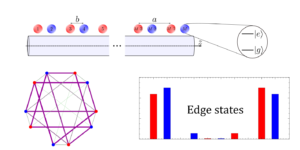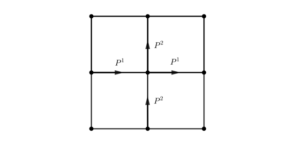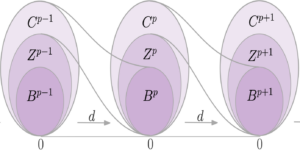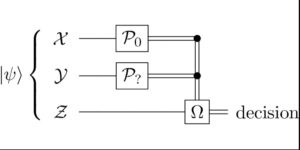1Centre de recherche quantique, Institut d'innovation technologique, Abu Dhabi, EAU
2Département de Física Quàntica i Astrofísica et Institut de Ciències del Cosmos (ICCUB), Universitat de Barcelona, Barcelone, Espagne.
3Département de physique théorique, CERN, CH-1211 Genève 23, Suisse.
4Institut de physique, Université nationale Yang Ming Chiao Tung, Hsinchu 30010, Taïwan.
5TIF Lab, Dipartimento di Fisica, Università degli Studi di Milano et INFN Sezione di Milano, Milan, Italie.
Vous trouvez cet article intéressant ou souhaitez en discuter? Scite ou laisse un commentaire sur SciRate.
Abstract
Nous proposons et évaluons une architecture alternative de générateur quantique dans le contexte de l'apprentissage contradictoire génératif pour la génération d'événements de Monte Carlo, utilisée pour simuler les processus de physique des particules au Grand collisionneur de hadrons (LHC). Nous validons cette méthodologie en implémentant le réseau quantique sur des données artificielles générées à partir de distributions sous-jacentes connues. Le réseau est ensuite appliqué à des ensembles de données générés par Monte Carlo de processus de diffusion spécifiques au LHC. La nouvelle architecture du générateur quantique conduit à une généralisation des implémentations de pointe, réalisant des divergences Kullback-Leibler plus petites même avec des réseaux peu profonds. De plus, le générateur quantique apprend avec succès les fonctions de distribution sous-jacentes même s'il est formé avec de petits ensembles d'échantillons d'apprentissage ; ceci est particulièrement intéressant pour les applications d'augmentation de données. Nous déployons cette nouvelle méthodologie sur deux architectures matérielles quantiques différentes, les technologies à ions piégés et supraconductrices, pour tester sa viabilité indépendante du matériel.
Image en vedette : à gauche, les étapes schématiques impliquées dans la formation style-qGAN. À droite, distributions d'échantillons marginaux pour les observables physiques, s, t, y en production pp -> ttbar au LHC pour le modèle style-qGAN.
► Données BibTeX
► Références
J. Preskill, Quantum 2, 79 (2018).
https://doi.org/10.22331/q-2018-08-06-79
F. Arute, K. Arya, R. Babbush, D. Bacon, JC Bardin, R. Barends, R. Biswas, S. Boixo, FGSL Brandao, DA Buell, et al., Nature 574, 505 (2019).
https://doi.org/10.1038/s41586-019-1666-5
H.-S. Zhong, H. Wang, Y.-H. Deng, M.-C. Chen, L.-C. Peng, Y.-H. Luo, J. Qin, D. Wu, X. Ding, Y. Hu et al., Science 370, 1460 (2020).
https: / / doi.org/ 10.1126 / science.abe8770
M. Cerezo, A. Arrasmith, R. Babbush, SC Benjamin, S. Endo, K. Fujii, JR McClean, K. Mitarai, X. Yuan, L. Cincio et al., Nature Reviews Physics 3, 625–644 (2021).
https://doi.org/10.1038/s42254-021-00348-9
K. Bharti, A. Cervera-Lierta, TH Kyaw, T. Haug, S. Alperin-Lea, A. Anand, M. Degroote, H. Heimonen, JS Kottmann, T. Menke, W.-K. Mok, S. Sim, L.-C. Kwek et A. Aspuru-Guzik, Reviews of Modern Physics 94, 015004 (2022).
https: / / doi.org/ 10.1103 / RevModPhys.94.015004
J.Biamonte, P. Wittek, N. Pancotti, P. Rebentrost, N. Wiebe et S. Lloyd, Nature 549, 195 (2017).
https: / / doi.org/ 10.1038 / nature23474
M. Schuld et F. Petruccione, Apprentissage supervisé avec des ordinateurs quantiques, Vol. 17 (Springer, 2018).
https://doi.org/10.1007/978-3-319-96424-9
N. Wiebe, D. Braun et S. Lloyd, Lettres d'examen physique 109, 050505 (2012).
https: / / doi.org/ 10.1103 / PhysRevLett.109.050505
S. Lloyd, M. Mohseni et P. Rebentrost, arXiv preprint arXiv:1307.0411 (2013).
https:///doi.org/10.48550/arXiv.1307.0411
arXiv: 1307.0411
P. Rebentrost, M. Mohseni et S. Lloyd, Physical Review Letters 113, 130503 (2014).
https: / / doi.org/ 10.1103 / physrevlett.113.130503
I. Kerenidis et A. Prakash, Examen physique A 101, 022316 (2020).
https: / / doi.org/ 10.1103 / PhysRevA.101.022316
AW Harrow, A. Hassidim et S. Lloyd, Physical Review Letters 103, 150502 (2009).
https: / / doi.org/ 10.1103 / PhysRevLett.103.150502
M. Benedetti, E. Lloyd, S. Sack et M. Fiorentini, Quantum Science and Technology 4, 043001 (2019a).
https://doi.org/10.1088/2058-9565/ab4eb5
S. Sim, PD Johnson et A. Aspuru-Guzik, Advanced Quantum Technologies 2, 1900070 (2019).
https: / / doi.org/ 10.1002 / qute.201900070
C. Bravo-Prieto, J. Lumbreras-Zarapico, L. Tagliacozzo et JI Latorre, Quantum 4, 272 (2020).
https://doi.org/10.22331/q-2020-05-28-272
M. Larocca, N. Ju, D. García-Martín, PJ Coles et M. Cerezo, arXiv preprint arXiv:2109.11676 (2021).
https:///doi.org/10.48550/arXiv.2109.11676
arXiv: 2109.11676
M. Schuld, R. Sweke et JJ Meyer, Examen physique A 103, 032430 (2021).
https: / / doi.org/ 10.1103 / PhysRevA.103.032430
T. Goto, QH Tran et K. Nakajima, Lettres d'examen physique 127, 090506 (2021).
https: / / doi.org/ 10.1103 / PhysRevLett.127.090506
A. Pérez-Salinas, D. López-Núñez, A. García-Sáez, P. Forn-Díaz et JI Latorre, Physical Review A 104, 012405 (2021).
https: / / doi.org/ 10.1103 / PhysRevA.104.012405
V. Havlíček, AD Córcoles, K. Temme, AW Harrow, A. Kandala, JM Chow et JM Gambetta, Nature 567, 209 (2019).
https://doi.org/10.1038/s41586-019-0980-2
M. Schuld, A. Bocharov, KM Svore et N. Wiebe, Examen physique A 101, 032308 (2020).
https: / / doi.org/ 10.1103 / physreva.101.032308
A. Pérez-Salinas, A. Cervera-Lierta, E. Gil-Fuster et JI Latorre, Quantum 4, 226 (2020).
https://doi.org/10.22331/q-2020-02-06-226
T. Dutta, A. Pérez-Salinas, JPS Cheng, JI Latorre et M. Mukherjee, Physical Review A 106, 012411 (2022).
https: / / doi.org/ 10.1103 / PhysRevA.106.012411
J. Romero, JP Olson et A. Aspuru-Guzik, Quantum Science and Technology 2, 045001 (2017).
https: / / doi.org/ 10.1088 / 2058-9565 / aa8072
A. Pepper, N. Tischler et GJ Pryde, Lettres d'examen physique 122, 060501 (2019).
https: / / doi.org/ 10.1103 / PhysRevLett.122.060501
C. Bravo-Prieto, Apprentissage automatique : science et technologie 2, 035028 (2021).
https:///doi.org/10.1088/2632-2153/ac0616
C. Cao et X. Wang, Physical Review Applied 15, 054012 (2021).
https: / / doi.org/ 10.1103 / PhysRevApplied.15.054012
M. Benedetti, D. Garcia-Pintos, O. Perdomo, V. Leyton-Ortega, Y. Nam et A. Perdomo-Ortiz, npj Quantum Information 5, 1 (2019b).
https://doi.org/10.1038/s41534-019-0157-8
KE Hamilton, EF Dumitrescu et RC Pooser, Examen physique A 99, 062323 (2019).
https: / / doi.org/ 10.1103 / PhysRevA.99.062323
B. Coyle, D. Mills, V. Danos et E. Kashefi, npj Quantum Information 6, 1 (2020).
https://doi.org/10.1038/s41534-020-00288-9
PL. Dallaire-Demers et N. Killoran, Physical Review A 98, 012324 (2018).
https: / / doi.org/ 10.1103 / PhysRevA.98.012324
S. Lloyd et C. Weedbrook, Lettres d'examen physique 121, 040502 (2018).
https: / / doi.org/ 10.1103 / PhysRevLett.121.040502
I. Goodfellow, J. Pouget-Abadie, M. Mirza, B. Xu, D. Warde-Farley, S. Ozair, A. Courville et Y. Bengio, Communications de l'ACM 63, 139-144 (2020).
https: / / doi.org/ 10.1145 / 3422622
C. Zoufal, A. Lucchi et S. Woerner, npj Quantum Information 5, 1 (2019).
https://doi.org/10.1038/s41534-019-0223-2
J. Zeng, Y. Wu, J.-G. Liu, L. Wang et J. Hu, Examen physique A 99, 052306 (2019).
https: / / doi.org/ 10.1103 / PhysRevA.99.052306
H. Situ, Z. He, Y. Wang, L. Li et S. Zheng, Sciences de l'information 538, 193 (2020).
https:///doi.org/10.1016/j.ins.2020.05.127
L. Hu, S.-H. Wu, W. Cai, Y. Ma, X. Mu, Y. Xu, H. Wang, Y. Song, DL-L. Deng, C.-L. Zou et al., Science advances 5, eaav2761 (2019).
https: / / doi.org/ 10.1126 / sciadv.aav2761
M. Benedetti, E. Grant, L. Wossnig et S. Severini, New Journal of Physics 21, 043023 (2019c).
https://doi.org/10.1088/1367-2630/ab14b5
J. Romero et A. Aspuru-Guzik, Advanced Quantum Technologies 4, 2000003 (2021).
https: / / doi.org/ 10.1002 / qute.202000003
MY Niu, A. Zlokapa, M. Broughton, S. Boixo, M. Mohseni, V. Smelyanskyi et H. Neven, Physical Review Letters 128, 220505 (2022).
https: / / doi.org/ 10.1103 / PhysRevLett.128.220505
T. Karras, S. Laine et T. Aila, IEEE Transactions on Pattern Analysis and Machine Intelligence 43, 4217 (2021).
https: / / doi.org/ 10.1109 / TPAMI.2020.2970919
A. Pérez-Salinas, J. Cruz-Martinez, AA Alhajri et S. Carrazza, Physical Review D 103, 034027 (2021).
https: / / doi.org/ 10.1103 / PhysRevD.103.034027
W. Guan, G. Perdue, A. Pesah, M. Schuld, K. Terashi, S. Vallecorsa et J.-R. Vlimant, Apprentissage automatique : science et technologie 2, 011003 (2021).
https:///doi.org/10.1088/2632-2153/abc17d
SY Chang, S. Vallecorsa, EF Combarro et F. Carminati, arXiv preprint arXiv:2101.11132 (2021a).
https:///doi.org/10.48550/arXiv.2101.11132
arXiv: 2101.11132
SY Chang, S. Herbert, S. Vallecorsa, EF Combarro et R. Duncan, EPJ Web of Conferences 251, 03050 (2021b).
https:///doi.org/10.1051/epjconf/202125103050
V. Belis, S. González-Castillo, C. Reissel, S. Vallecorsa, EF Combarro, G. Dissertori et F. Reiter, EPJ Web of Conferences 251, 03070 (2021).
https:///doi.org/10.1051/epjconf/202125103070
GR Khattak, S. Vallecorsa, F. Carminati et GM Khan, The European Physical Journal C 82, 1 (2022).
https://doi.org/10.1140/epjc/s10052-022-10258-4
P. Baldi, L. Blecher, A. Butter, J. Collado, JN Howard, F. Keilbach, T. Plehn, G. Kasieczka et D. Whiteson, arXiv preprint arXiv:2012.11944 (2021).
https:///doi.org/10.48550/arXiv.2012.11944
arXiv: 2012.11944
M. Backes, A. Butter, T. Plehn et R. Winterhalder, SciPost Physics 10, 89 (2021).
https: / / doi.org/ 10.21468 / SciPostPhys.10.4.089
A. Butter et T. Plehn, dans Artificial Intelligence For High Energy Physics (World Scientific, 2022) pp. 191–240.
https: / / doi.org/ 10.1142 / 9789811234033_0007
A. Butter, S. Diefenbacher, G. Kasieczka, B. Nachman et T. Plehn, SciPost Physics 10, 139 (2021).
https: / / doi.org/ 10.21468 / SciPostPhys.10.6.139
A. Butter, T. Plehn et R. Winterhalder, SciPost Physics Core 3, 9 (2020).
https:///doi.org/10.21468/SciPostPhysCore.3.2.009
M. Bellagente, A. Butter, G. Kasieczka, T. Plehn et R. Winterhalder, SciPost Physics 8, 70 (2020).
https: / / doi.org/ 10.21468 / SciPostPhys.8.4.070
A. Butter, T. Plehn et R. Winterhalder, SciPost Physics 7, 75 (2019).
https: / / doi.org/ 10.21468 / SciPostPhys.7.6.075
S. Efthymiou, S. Ramos-Calderer, C. Bravo-Prieto, A. Pérez-Salinas, D. García-Martín, A. Garcia-Saez, JI Latorre et S. Carrazza, Quantum Science and Technology 7, 015018 ( 2021a).
https://doi.org/10.1088/2058-9565/ac39f5
S. Efthymiou, S. Carrazza, S. Ramos, bpcarlos, AdrianPerezSalinas, D. García-Martín, Paul, J. Serrano et atomicprinter, qiboteam/qibo : Qibo 0.1.6-rc1 (2021b).
https: / / doi.org/ 10.5281 / zenodo.5088103
M. Abadi, A. Agarwal, P. Barham, E. Brevdo, Z. Chen, C. Citro, GS Corrado, A. Davis, J. Dean, M. Devin, et al., TensorFlow : Apprentissage automatique à grande échelle on heterogeneous systems (2015), logiciel disponible sur tensorflow.org.
https: / / www.tensorflow.org/
afrancis heplat, C. Bravo-Prieto, S. Carrazza, M. Cè, J. Baglio et dm grabowska, Qti-th/style-qgan : v1.0.0 (2021).
https: / / doi.org/ 10.5281 / zenodo.5567077
MD Zeiler, arXiv preprint arXiv:1212.5701 (2012).
https:///doi.org/10.48550/arXiv.1212.5701
arXiv: 1212.5701
M. Ostaszewski, E. Grant et M. Benedetti, Quantum 5, 391 (2021).
https://doi.org/10.22331/q-2021-01-28-391
S. Kullback et RA Leibler, Les Annals of Mathematical Statistics 22, 79 (1951).
https: / / doi.org/ 10.1214 / aoms / 1177729694
M. Frid-Adar, E. Klang, M. Amitai, J. Goldberger et H. Greenspan, en 2018 IEEE 15th International Symposium on Biomedical Imaging (ISBI 2018) (2018) pp. 289–293.
https:///doi.org/10.1109/ISBI.2018.8363576
FHK dos Santos Tanaka et C. Aranha, prétirage arXiv arXiv:1904.09135 (2019).
https:///doi.org/10.48550/arXiv.1904.09135
arXiv: 1904.09135
J. Alwall, R. Frederix, S. Frixione, V. Hirschi, F. Maltoni, O. Mattelaer, HS Shao, T. Stelzer, P. Torrielli et M. Zaro, Journal of High Energy Physics 07, 079 (2014 ).
https: / / doi.org/ 10.1007 / JHEP07 (2014) 079
R. Frederix, S. Frixione, V. Hirschi, D. Pagani, HS Shao et M. Zaro, Journal of High Energy Physics 07, 185 (2018).
https: / / doi.org/ 10.1007 / JHEP07 (2018) 185
I.-K. Yeo et RA Johnson, Biometrika 87, 954 (2000).
https: / / doi.org/ 10.1093 / biomet / 87.4.954
F. Pedregosa, G. Varoquaux, A. Gramfort, V. Michel, B. Thirion, O. Grisel, M. Blondel, P. Prettenhofer, R. Weiss, V. Dubourg, J. Vanderplas, A. Passos, D. Cournapeau, M. Brucher, M. Perrot et E. Duchesnay, Journal of Machine Learning Research 12, 2825–2830 (2011).
https: / / dl.acm.org/ doi / 10.5555 / 1953048.2078195
G. Aleksandrowicz, T. Alexander, P. Barkoutsos, L. Bello, Y. Ben-Haim, D. Bucher, FJ Cabrera-Hernández, J. Carballo-Franquis, A. Chen, C.-F. Chen, et al., Qiskit : un cadre open source pour l'informatique quantique (2019).
https: / / doi.org/ 10.5281 / zenodo.2562111
Cité par
[1] Travis S. Humble, Andrea Delgado, Raphael Pooser, Christopher Seck, Ryan Bennink, Vicente Leyton-Ortega, C.-C. Joseph Wang, Eugene Dumitrescu, Titus Morris, Kathleen Hamilton, Dmitry Lyakh, Prasanna Date, Yan Wang, Nicholas A. Peters, Katherine J. Evans, Marcel Demarteau, Alex McCaskey, Thien Nguyen, Susan Clark, Melissa Reville, Alberto Di Meglio, Michele Grossi, Sofia Vallecorsa, Kerstin Borras, Karl Jansen et Dirk Krücker, "Snowmass White Paper: Quantum Computing Systems and Software for High-energy Physics Research", arXiv: 2203.07091.
[2] Andreas Adelmann, Walter Hopkins, Evangelos Kourlitis, Michael Kagan, Gregor Kasieczka, Claudius Krause, David Shih, Vinicius Mikuni, Benjamin Nachman, Kevin Pedro et Daniel Winklehner, "Nouvelles orientations pour les modèles de substitution et la programmation différentiable pour la physique des hautes énergies simulation de détecteur », arXiv: 2203.08806.
[3] Andrea Delgado, Kathleen E. Hamilton, Prasanna Date, Jean-Roch Vlimant, Duarte Magano, Yasser Omar, Pedrame Bargassa, Anthony Francis, Alessio Gianelle, Lorenzo Sestini, Donatella Lucchesi, Davide Zuliani, Davide Nicotra, Jacco de Vries, Dominica Dibenedetto, Miriam Lucio Martinez, Eduardo Rodrigues, Carlos Vazquez Sierra, Sofia Vallecorsa, Jesse Thaler, Carlos Bravo-Prieto, sur Yeon Chang, Jeffrey Lazar et Carlos A. Argüelles, "Quantum Computing for Data Analysis in High-Energy Physics" , arXiv: 2203.08805.
[4] Yuxuan Du, Zhuozhuo Tu, Bujiao Wu, Xiao Yuan et Dacheng Tao, "Le pouvoir de l'apprentissage génératif quantique", arXiv: 2205.04730.
[5] Stefano Carrazza, Stavros Efthymiou, Marco Lazzarin et Andrea Pasquale, "Un cadre modulaire open-source pour l'informatique quantique", arXiv: 2202.07017.
[6] Sandra Nguemto et Vicente Leyton-Ortega, "Re-QGAN: un cadre d'apprentissage de circuit quantique contradictoire optimisé", arXiv: 2208.02165.
[7] Gabriele Agliardi, Michele Grossi, Mathieu Pellen et Enrico Prati, « Intégration quantique des processus de particules élémentaires », Lettres de physique B 832, 137228 (2022).
[8] Jack Y. Araz et Michael Spannowsky, "Classique contre Quantique : comparaison des circuits quantiques basés sur le réseau de tenseurs sur les données du LHC", arXiv: 2202.10471.
[9] Andrea Delgado et Kathleen E. Hamilton, "Apprentissage de circuits quantiques non supervisés en physique des hautes énergies", arXiv: 2203.03578.
[10] Sulaiman Alvi, Christian Bauer et Benjamin Nachman, "Quantum Anomaly Detection for Collider Physics", arXiv: 2206.08391.
[11] Oriel Kiss, Michele Grossi, Enrique Kajomovitz et Sofia Vallecorsa, « Conditional Born machine for Monte Carlo events generation », arXiv: 2205.07674.
Les citations ci-dessus proviennent de SAO / NASA ADS (dernière mise à jour réussie 2022-08-18 08:19:35). La liste peut être incomplète car tous les éditeurs ne fournissent pas de données de citation appropriées et complètes.
On Le service cité par Crossref aucune donnée sur la citation des œuvres n'a été trouvée (dernière tentative 2022-08-18 08:19:33).
Cet article est publié dans Quantum sous le Creative Commons Attribution 4.0 International (CC BY 4.0) Licence. Le droit d'auteur reste la propriété des détenteurs d'origine tels que les auteurs ou leurs institutions.

